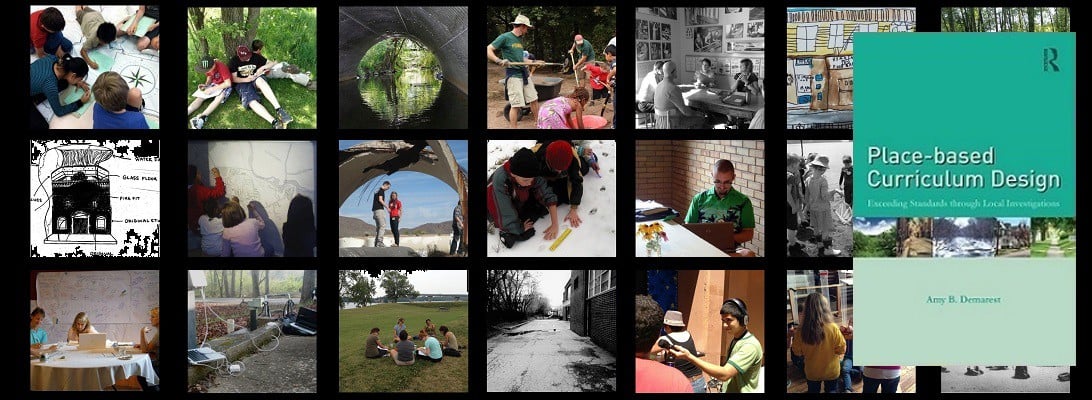| David Erickson dericks5@emich.edu 244.86.140.72 |
Submitted on 2015/09/29 at 8:05 pm
First I want to thank you for taking the time you write to our class! My question is if you have administrators that aren’t a fan of students going out side of the classroom how would you bring the natural environment to the students, inside the classroom. ABD response: Hi David That is a big question! I liked the way one author answered it: Lisa Lusero (2006) names four kinds of experiences: “interacting with the real thing; interacting with evidence of the real thing, interacting with something comparable to the real thing and linking the real thing to something with which we interact” (p. 58). I agree with her that there are all kinds of levels of “real.” I think it comes down to a matter of context. How many teachers teach big ideas without kids touching rocks, looking at pictures of local streams, comparing mountains to ones nearby and elsewhere in the world, giving assignments that ask kids to look around on the way home….. In the classroom they can touch bark, salamanders, hatch eggs….Teachers can have guest speakers, images of real places (not canned posters of who knows what), texts that address local issues, live animals. It is not a matter of just getting out of school….Although that is something to aim for—there are many ways to bring, as one teacher said, “the out, in!” Lastly—just a comment on administrators—While it is a reality that the funding and logistics of getting outside are daunting—it is really true that “where there is a will, there is a way.” Take care-Amy |

Hi Amy!
I really loved going through all of the archives and seeing examples of place based education in action. It is truly amazing just how engaging the whole process is. Have you come across examples that are in the urban setting?
Laura
Hi Laura
I sent an email (I know your generation hardly ever uses EM!) to ask which archives you were referring to. There are a number of urban case studies but not catalogued as such. You will have to dig around. Two great places to start are the High Tech High Website–specifically look at their student work and publications (UnBoxed and Urban Ecology) and the Vt Community Works website.
Let me know what you find!
BEst-Amy
Hi, Amy!
I thoroughly enjoyed your blog post. It’s fascinating how everyday objects, like water and culverts, have a story to tell. We have a tendency to take these everyday objects for granted, but my favorite aspect of PBE is that we are able to examine how these objects function in their environment and in our community to gain new knowledge that is useful in a co-curricular context. I have a question that is somewhat similar to David’s, but I’m interested in how to get other teachers on board. If you’re a new teacher entering a school that doesn’t model place-based curriculum, what are some possible ways to push for it? I greatly appreciate the time you’ve taken to engage with our class. I look forward to hearing more from you.
Abby
Hi Abby!
I think the question of bringing others along is a question of faith! It goes back to Prof Lowenstein’s first comment a few days ago where he noted the ways that other sources of support would come—it you just followed the energy generated by this work. A very cool educator names Dennis Lipke said: “The kids will carry the message.” And I think that is true. I think that you will find ways to reach out and share your enthusiasm….and lobby and network for some of the things you believe in—but the work is also visible. Other teachers will look at what your students are creating and how they are acting and say: Wow–I want some of that!”
Another simple part of the answer to this question is to ask a colleague to join in. MAybe it is sharing a resource or providing an aspect of a project (bringing in the art teacher or LA teacher or….. another teacher to provide another angle to your investigation. Sometimes other teachers just might want a little help in identifying a niche for them.
Have fun!
Amy